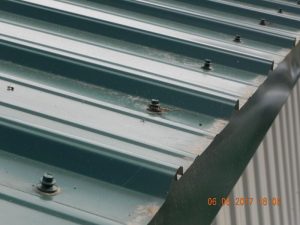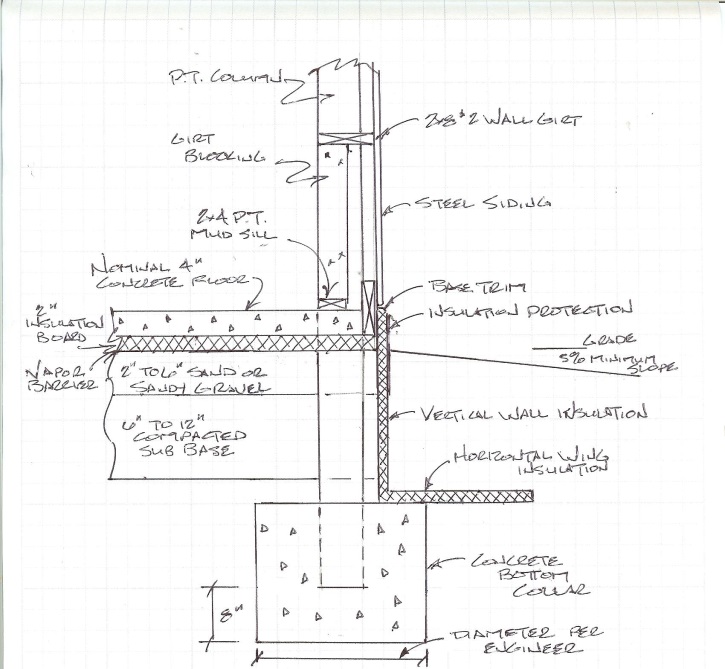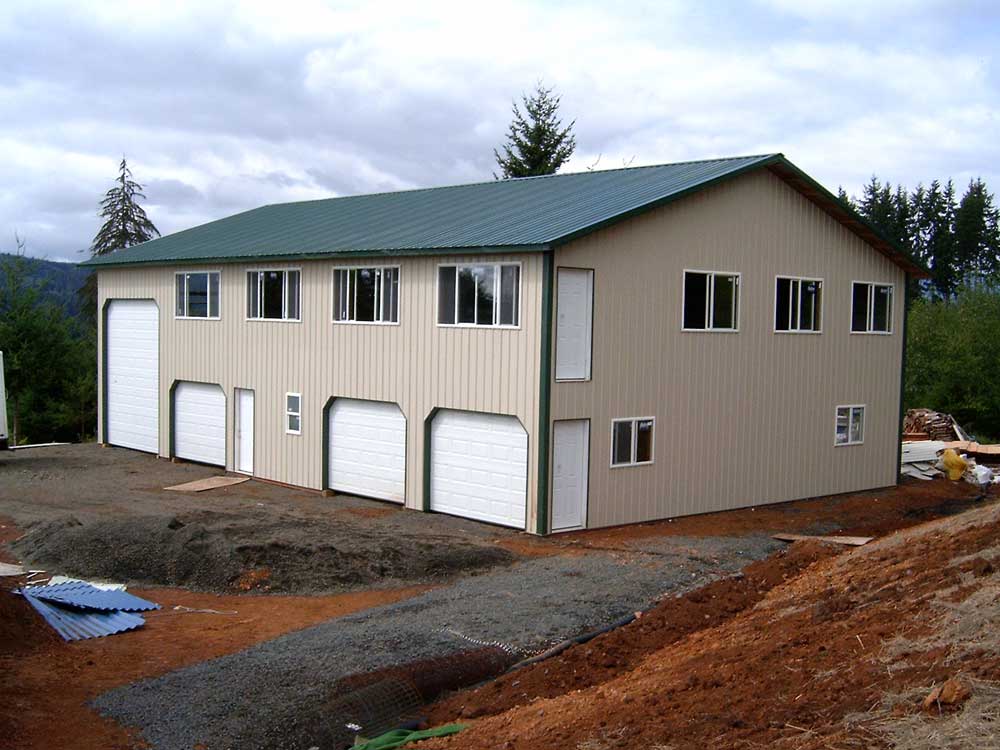I happen to be very, very picky about how a finished post frame (pole barn) building looks. One thing I really notice is if screw lines are straight or not. I have seen some buildings where screw locations appear to have been predrilled using a scatter gun – up and down and everywhere except straight.

Hansen Pole Buildings’ Construction Manual does provide instructions on how to pre-drill screw holes to achieve straight lines. There are other acceptable methods however.
Loyal and long-time reader VINCE in CHAFFEE writes:
“Is using an awl or punch an acceptable alternative to pre-drilling screw holes?”
And he attached this video:
https://youtu.be/DWltNxO-TT4
There are some things missing from this video.
Due to slight length variations, panels should be pushed so downward ends are all flush. Any variability will be covered by trims at top edge.
Steel panels should be held in place to prevent panel slippage. I used to use pairs of vice grips, with felt pads glued on to prevent scarring of painted surfaces.
Punching always seemed to work best when there was something solid beneath punching locations. I normally used a clean scrap piece of 2×4.
Bottom and top of steel panels need to be “double screwed” – a screw needs to be placed on each side of every high rib. Not only is this per manufacturer’s installation instructions, it also is necessary to adequately transfer shear loads, in most instances.
Recently I attended NFBA’s (National Frame Building Association) 2019 Frame Building Expo. While there, I found County Line Concepts (www.CountyLineConcepts.com) has designed a better “mouse trap” for punching holes in steel panels.
Please check out this live Expo video featuring Gordon: https://www.facebook.com/polebarnguru/videos/2110669922360329/
Now a Ridge Runner 3:10™ may be too great of an investment for an average DIYer, however it is certainly something worth investigating for contractors.










What drill and accessories would you recommend for punches?
For pre-drilling screw holes any 1/4″ drill motor and a 7/64” or 1/8” bit.